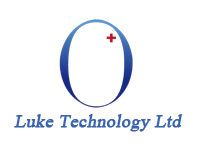“Performance, characteristics, innovation, advancement”


Models for Operation and Planning
-
Improve operation outcome and operation room use time
-
Operation room use time is an expensive resource. The longer an operation lasts, the longer the subsequent recovery time for the patient. -
Stratasys 3D Printing solution can help you optimize pre-operative preparation, and as a result improve operation efficiency and certainty -
Models based on the actual patient’s anatomy can improve clinical results. Models are derived from patient scans, and are provided to doctors -
The patient's treatment plan can be perfected before entering the operating room -
It can simulate the characteristics of real organs. We can simulate the characteristics of soft tissues, muscles, and bones. Transparent materials can be used so hidden tissues and blood vessels is made visible.



3D Medical Model for Teaching
- Help medical institutions and students better understand knowledge and prepare for operations.
-
Perform clinical-related training anytime, anywhere on realistic anatomical models customized for almost any clinical scenario. The human body is complex and changes constantly, so the work that can be done by operating on animals, cadavers and anatomical models is limited. Without a clinically relevant model, doctors and students will miss out on the full benefits of in-person experience. Therefore, before acquiring the skills and knowledge required for clinical success, the skill-development of interns takes longer and requires extensive internship observations -
The traditional medical training models are expensive and are produced using traditional manufacturing process, whereas multi-material 3D printing can create realistic, accurate and universal models in a shorter time and at a very low cost



Operation Room Instruments
-
Medical equipment itself has strict precision properties. In the production process of medical equipment, there are clear requirements for precision and toughness of injection molded products, ranging from hyperbaric oxygen chambers to hearing aids, medical buttons, anesthesia laryngoscopy, etc.. As a cutting-edge technology, 3D Printing is constantly broadening its application scenario in the production of medical equipment, and its application value is gaining more and more attention. It can be very difficult to manufacture surgical instruments using traditional techniques, which also involves longer production time and higher cost.




Oral Implant
-
Medical 3D Printing is more and more widely used in the field of oral surgery. More and more denture laboratories and dental clinics are introducing 3D printing technology. The main application modules include: denture repair, orthodontics and implants. Compared to traditional treatment process, 3D printing increases efficiency in diagnosis and treatment. Take dental implant as an example: in the past, the diagnosis and treatment relied more on the experience and judgement of the oral surgeon. With the use of medical 3D printing technology, through an oral scan, the analysis of individual gum conditions, the design of the best implant point, and the use of 3D printed implant surgical guides that fit the patient's oral situation, the accuracy of this type of oral surgery can be improved, and its risk reduced.





Custom-order of Personalized Medical Equipment
-
Stratasys 3D Printing Solution provides the flexibility to quickly, economically and efficiently optimize designs, so that you can verify and validify your product quicklier and enter the market sooner. -
It facilitates clear and detailed physician feedback. The detailed model concept translates to almost all shapes, textures, and material characteristics of the medical equipment. -
It collects reliable performance data and accelerates model evaluation. You can customize your own testing fixtures for the optimization of any task.



